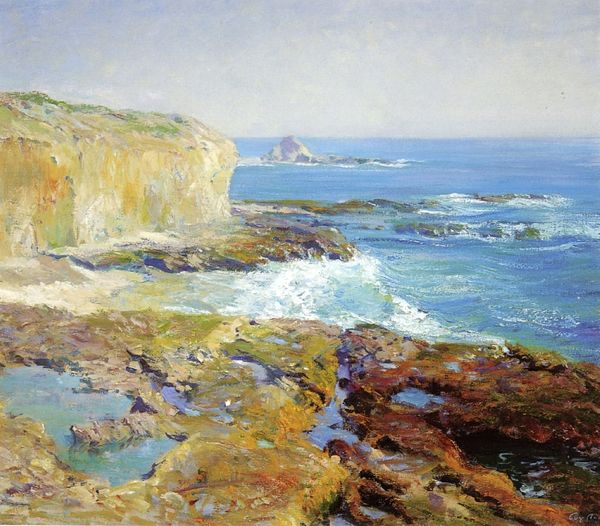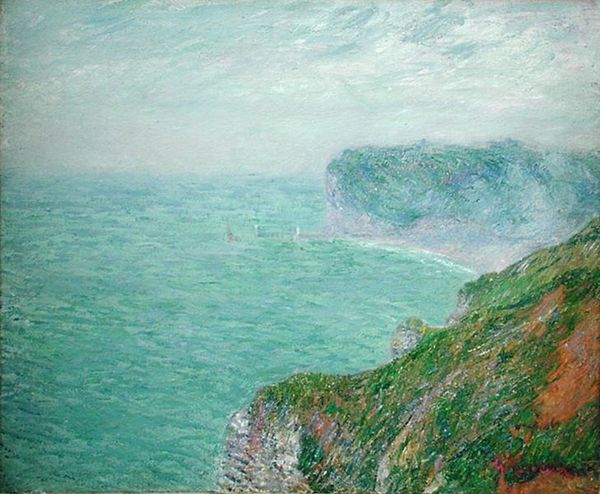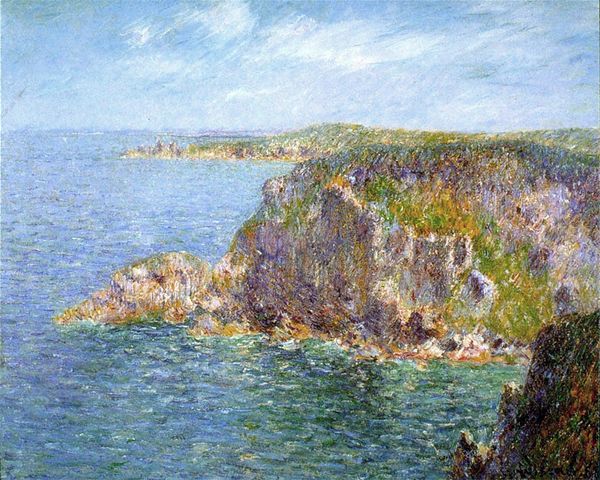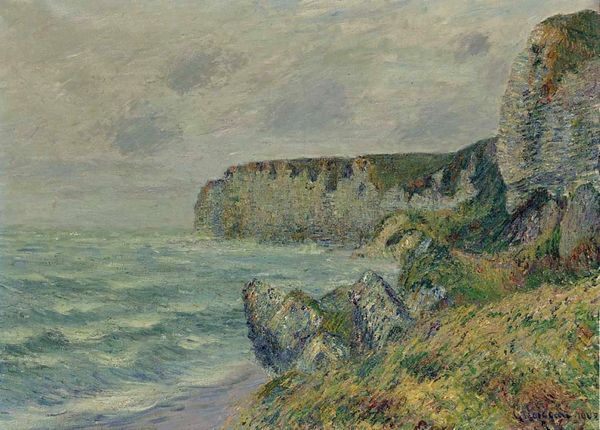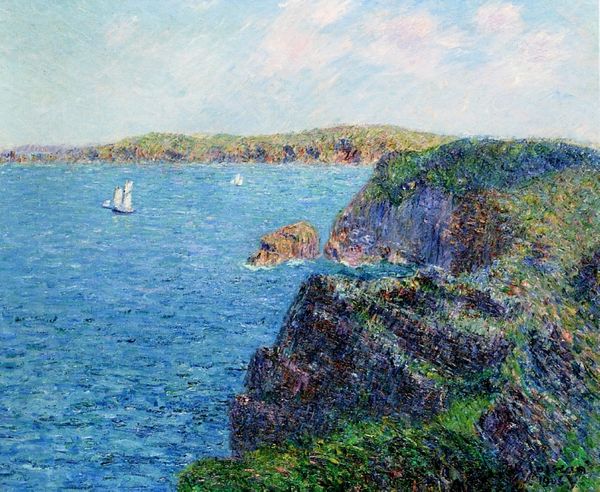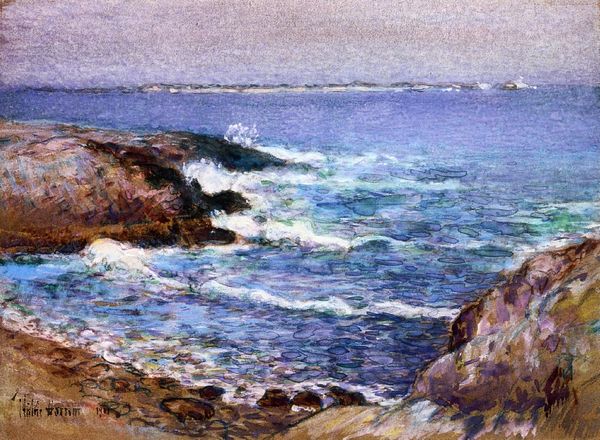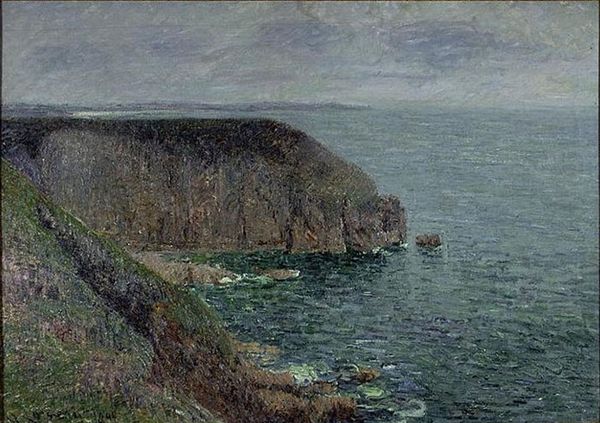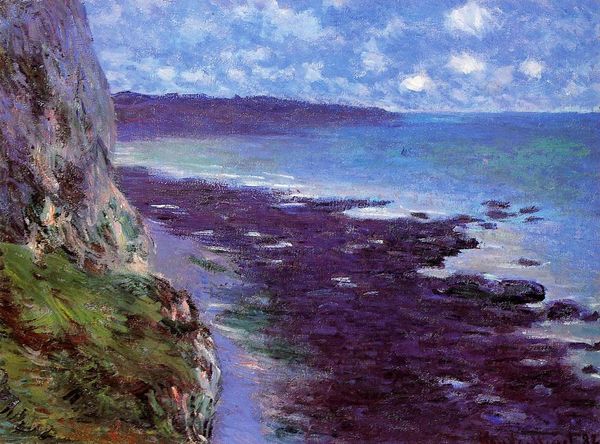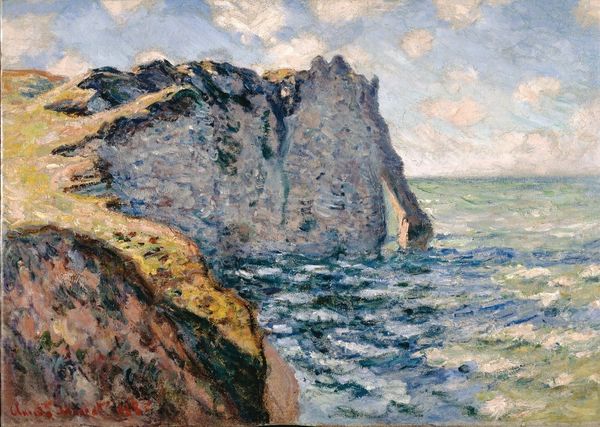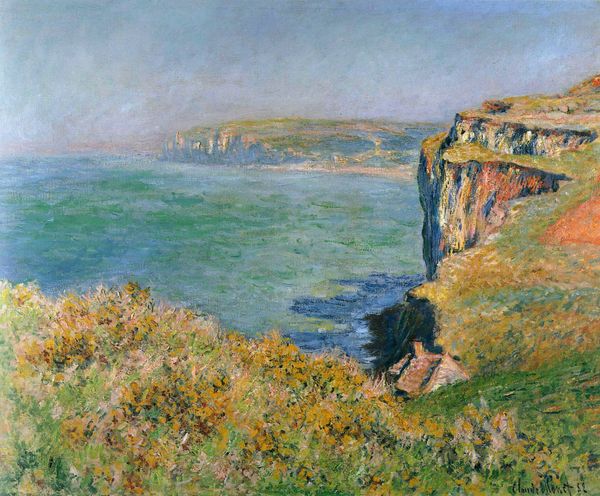
Copyright: Public domain
Editor: Gustave Loiseau's "Cliffs at Cape Frehel," created around 1905, renders the landscape in oil with a flurry of brushstrokes. I'm struck by the way the light dances on the water – it almost vibrates. What do you see in this piece? Curator: I see a powerful expression of nature's enduring presence. The cliffs themselves are symbols of steadfastness, haven't they served as protective totems across cultures? Consider how coastal communities have historically looked to the cliffs for shelter and sustenance. Editor: So, you see the cliffs as more than just geological formations? Curator: Precisely. Their very shape, that jutting form against the sea, represents a boundary, a meeting place of opposing forces. And look at the water—the broken brushstrokes convey constant motion and change, reminding us of time’s relentless flow. The cliffs stand firm against that ephemeral rush. What do they represent? Perhaps perseverance, maybe the unconscious? Editor: That contrast between permanence and transience is compelling. It's interesting how he used those distinct brushstrokes to convey that difference in...spirit, almost. Curator: Indeed. The impressionistic technique isn't merely about capturing light; it's about revealing deeper emotional and psychological states associated with the scene. Think about the Romantics and their obsession with sublime landscapes - the overwhelming, awe-inspiring power of nature. Doesn’t that resonate here? Editor: Definitely. I hadn't really considered the cliffs as a symbol before. It really gives a new dimension to the work, going beyond just a pretty landscape. Curator: Precisely! Visual symbols, encoded over time, invite us to delve into collective memories. Every viewer brings their own experiences to interpreting the images. Editor: This has been such a refreshing new outlook into reading a work of art. Thanks so much.
Comments
No comments
Be the first to comment and join the conversation on the ultimate creative platform.


